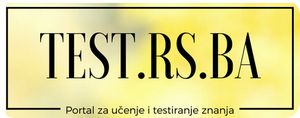It is easy to infringe Copyright on the web. The tools we have at our disposal, in the form of web browsers, such as Microsoft's Internet Explorer and Netscape Navigator, and site copying programs like Web Whacker and Anawave WebSnake allow us to save pages or whole sites onto our computers with ease. Even email can be unwittingly used to breach copyright laws. Consider the following situations:
- I find a website which discusses copyright, perfect as a further reading for participants at a conference where I presented a paper. I copy the text from one page in the site and email it to all conference participants, with the suggestion that they visit this site to learn more about current copyright issues. It is probable that I have breached copyright.
- I see an image which would be perfect for the background of a number of pages on a site I am working on. I know that if I copy the image to my site I am infringing copyright so I decide to simply point to the URL of the image and include it in my pages this way. I know that this is less secure, as the image might be moved or deleted at any time, but I decide that this is better than breaking copyright. Unfortunately, including images in this manner still breaches copyright.
- I am creating a new site and need a cartoon for a page on coming events. I see the perfect image on another site so I write to the owner of the site to ask permission to use the image on the new site. I receive permission and happily insert the image in the web page. What I don't know is that the creator of the original website doesn't actually hold copyright in the image, making me in breach of copyright yet again.
- Having been made aware of the problem with the cartoon I used in the organisation's site, I search through some old publications of the organisation and find a cartoon that will work just as well. Fortunately, the cartoon was commissioned by the organisation for the journal it appeared in, so I reason that I can also use it on our website. However, a close reading of the agreement with our cartoonist shows that he has granted us the right to use the images he creates in paper publications only. If I wish to use it on our website I will have to negotiate a new fee with him.
- A school I am scheduled to visit next week informs me that their Internet connection is very slow. As I am going there to show staff how to use a particular website I make a complete, unaltered copy, without permission and save it on a floppy disk. I then use the disk version of the site in my presentation because it is much faster and more reliable than the school's Internet connection. By doing this I have almost certainly infringed copyright.
Intellectual property rights pertain to the Internet just as much as they do to other media, yet there is a common misconception that these laws either do not apply, or only apply loosely, to this new form of publishing. It is difficult to give advice on this issue without seeming to be somewhat negative, but the laws governing copyright do apply and should be adhered to.
The Internet, particularly the World Wide Web, has been a somewhat anarchic environment, where few of the "normal" rules have seemed to apply. The development of web browsers which allowed users to save pages, sounds and images onto their own computers added to this anarchic flavour.
Even today, the best advice I can give regarding learning how to do some of the more esoteric tasks with HTML is to look at the source code of a page which you want to emulate.
HTML, JavaScript, information about the program used to create the page, as well as the image, sound and video files are all able to be downloaded onto your own computer in a very short space of time.
Sources of content for you website
Your site should essentially be your own work. Original content is the key attraction you have to draw visitors to your site. Your content is what makes your site unique and useful, but there will be times when you will want to make use of the work of other people. If you see an image or other material which you would like to use in your website the simplest way to legally use it is to send an email to the owner of that site, asking permission to use the image. You might be asked to include an acknowledgement of the source but more often the creators will simply be happy to have someone else use their work.
Sometimes a condition will be imposed on the use, such as non-commercial use only, using the image from its current location rather than you making a copy of it, and so on. It will be up to you to decide if you are happy to comply with such conditions. If you send a request for an image to a commercial site the answer is more likely to be negative. When you do get a positive response to a request it is important to keep documentation of the permission granted. Print out the email and keep it with your website paperwork.
If you have any graphic skills then you should consider creating your own images. Don't scan artwork from books or commercial photos and then manipulate them in some way. These are copyright also and you are not able to alter the original and claim it as your own. Use your own drawings and photos where possible. This increases the original content on your site and also relieves you of a number of headaches.
If you use photos of people where they are easily recognisable then you should consider obtaining a release from these people to use the image in your site. This isn't done all that often, but you should be aware that if someone tells you that they are in a photo contained in your site and they don't want it there then you should remove it immediately. If they have signed a release this doesn't apply.
Many graphics packages contain collections of drawings and photos which are copyright free. There may be some limitations but generally you will be able to use these images wherever you wish. Computer retailers also carry CD-ROMs containing "stock" photos and other images. Usually these are also copyright free, or use is limited only in certain ways, generally concerning commercial reproduction.
Paying other people to create content for you
If you choose to pay a graphic artist to develop artwork for you, ensure that you obtain the rights to use the artwork in a variety of media. Ideally, your agreement with the designer should include your ownership of copyright of all material developed, otherwise you may end up in a situation where you will be required to go back to the artist for any minor changes to the images, or to obtain permission to use the images on a website if they were originally designed for a letterhead. The same caveat applies to text, audio and video content developed for you by contractors.
Frames
Netscape added to copyright problems on the web by developing the Frame command within HTML. By using a frameset website developers can load several pages into a series of frames, allowing all the pages to the viewed within one window. This means developers can create a menu in one HTML page which is visible regardless of where the user is within a website.
The main area within a frameset is usually used to display content. This would normally be a series of web pages kept within the website, but the content can be called from any web server in the world. This means that I can develop a website which contains content not created by me, but which is to all intents part of my own site. I can create a menu which controls where users go within the site, include advertisements, change the layout of material, all without the permission of the people who developed this material in the first place.
There is an ongoing debate about whether using frames to include information from an external website is a breach of copyright or not. The question hinges on whether using frames to place content inside your own pages constitutes the creation of a derivative work. If this is the case then a website which use frames in this matter would clearly be in breach of copyright rules. If you find that there are sites which include your pages inside their own, passing your work off as their own, the simplest way to deal with the problem is to include a small JavaScript which detects where the request for your page originates and loads your page on top if another website tries to include your page as part of a frameset. The JCSAV home page includes such a JavaScript, which you are welcome to copy.
Generally, if you want to refer to material on another site, create a link to it rather than include it in your own site. As long as you make it clear that users following a link will be going to another site you should be not seen to be infringing copyright.
Copyright notices
Any time you create an image, a sound file, an HTML page or a video clip you are creating a copyright work. You don't have to explicitly state that it is copyright - the law recognizes that your work is your own. You might have handed over those intellectual property rights to another party, either by selling the rights, or by entering into an employment agreement where all material you create during working hours is owned by your employer.
This is common amongst universities and other educational institutions.
A copyright notice could be saved as a separate page and a link to the notice could be included on some or all pages. Clearly set out what you will and will not allow users to do with the material on your site. Be sure that you are legally able to grant these rights though. There may be other copyright owners which you will need to consult with regarding this, particularly if you have commissioned material such as text, audio or images for your site.
Even if a copyright notice is not included your work is still copyright, but by including this information you are bringing this to the attention of users of your site, and potential users of the material at least know how to go about seeking permission to use it elsewhere.
Enforcing Copyright
Copyright on the Internet is slowly beginning to be taken more seriously although most countries are still struggling to come to grips with the implications of copyright online. In what is being seen as a key decision, the International Lyric Server website was shut down by Swiss police after legal authorities ordered the seizure of the computers used to serve the website content. The International Lyric Server hosted the lyrics to tens of thousands of songs, posted to the server by the site's users, without permission from the copyright owners. This action was taken after a criminal suit was brought against International Lyric Server by several music publishers.
This decision highlights an important aspect of the problems of protecting copyright. The Berne Convention protects your copyright in most countries, but unless you have considerable financial resources you will be unable to enforce your copyright here, let alone overseas. This doesn't mean that you should not try to enforce your rights, but you should also think carefully about how much those rights are worth to you before instigating legal procedures which will certainly run into many thousands of dollars. Using common sense and good manners when talking to infringers may well be a better option than employing lawyers.
Generally, when you come across examples of theft of your work and you feel strongly enough about it to do something, these are the steps you might like to take:
- Write to the creator of the offending website, informing them of the breach and, depending on how you feel, asking them to either remove the copyright material or add an acknowledgement of your ownership. As this might take the form of a link to your website, which will help raise your web profile, this is the outcome I suggest you try for.
- If nothing comes of your communication with the website creator, write to the administrator of the server hosting the website, explaining the situation and asking for the matter to be resolved. This may work, as certainly in Australia the owners of the hosting server can also be held liable for breaches of copyright which occur on their computers.
- Finally, if nothing else works, do what Philip Greenspun does. Create an online "hall of shame" detailing the sites which have stolen your material. Look at Greenspun's example athttp://photo.net/philg/copyright/hall-of-shame.html.
A significant point regarding copyright relates to suggestion 2. If you host a chat site or a web board within your site you could be considered liable for unauthorised material posted to such sites. If teachers place copyright material on your teaching resources web board then you become responsible for it.
I would suggest that a strong policy on copyright material be developed regarding copyright infringement by the users of your site. In the USA there is still discussion about monitoring the content of such sites. If you are seen to remove one piece of unauthorised material but not others then you are probably more likely to be considered liable than if you don't remove any material.
This information is necessarily limited in scope and should be used simply as a starting point for your research into copyright and the Internet. More information about copyright issues may be obtained from the Australian Copyright Council (http://www.copyright.org.au/). They have a number of information sheets available for download and point to more specific information about copyright law.
Author: Peter Batchelor






